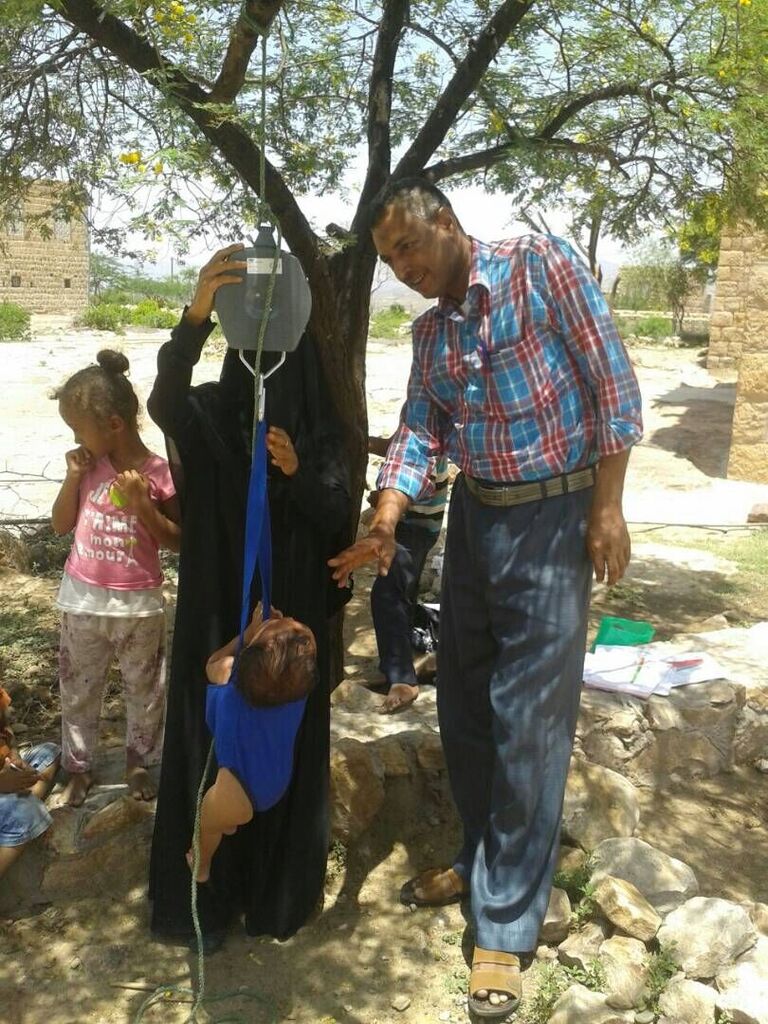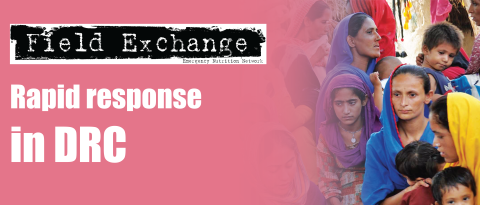Un voyage vers la programmation nutritionnelle multisectorielle au Népal : évolution, processus et perspectives
Dr Fatima AK Sallam is a Project Manager with Soul for Development, a local Yemeni NGO. She is a qualified medical doctor.
Khaled Albably is a Senior Project Officer with Soul for Development, with over five years’ experience of managing nutrition and health projects.
Charity Zvandaziva is a nutrition specialist working for UNICEF Yemen, with over 20 years’ experience in the field.
Dr Karanveer Singh is a Nutrition Manager with UNICEF Yemen and a paediatric doctor with over 28 years’ experience in child health and nutrition.
 Click here to listen to an interview with the authors on the ENN podcast channel Click here to listen to an interview with the authors on the ENN podcast channel |
Yemen is among the poorest countries in the Middle East region with a population of 27 million. It is divided into 22 governorates (the highest administrative division in the country) and Taizz, one of its most populous and war-torn, has seen active conflict and the most sustained fighting in the country since 2015. Global acute malnutrition (GAM) is 17 per cent and severe acute malnutrition (SAM) is 1.9 per cent in Taizz City, while in the Taizz lowlands GAM and SAM are 25.1 per cent and 5.3 per cent respectively. Stunting (low height for age) levels are very high, at over 50 per cent1.
A partnership between UNICEF and a local NGO, Soul for Development, was set up to implement a pilot project for a two-year, integrated, community-based programme in three out of 23 districts in Taizz (208 villages with a combined population of 312,634) from March 2015 to February 2017. The project used the ‘triple A’ approach2, which enables communities to Assess and Analyse the causes of their health and nutrition-related problems and identify and agree ‘doable Actions’ at the family and community levels to improve health and nutrition status.
Developing community engagement
The entry point to community engagement was the formation of 193 village development committees (VDCs). These are groups of about eight to ten influential people in the community, including school principals, traditional leaders, sheikhs (tribal leaders) and religious leaders, such as imams. A further 15 sub-district development committees were also formed. These committees, together with the respective District Health Office, were involved in the selection of 770 female community health volunteers (CHVs), who were trained to provide health and nutrition services in 50 per cent of the villages. The main roles of the CHVs were to screen children for acute malnutrition3 and refer for treatment, and to provide micronutrient powders to children under two years old, iron and folate to pregnant women, and deworming tablets to children under five years old. The CHV role is voluntary, although transport costs are covered. CHVs were later trained on growth monitoring and promotion for children under two years old.
The CHVs collect health and nutrition data through community registers and community growth charts, which are discussed with household members during home visits, and at community level by VDCs. VDC members were briefed on how to discuss nutrition-related issues within their communities.
Almost one third of villages (68 out of 193)4 that achieved ten criteria were designated model villages. Criteria included: availability of all structures – CHVs, VDCs; availability of CHV supervisors; and scheduled meetings conducted regularly. VDCs in the model villages took the lead in organising events and activities to address health and nutrition problems without external support, including education festivals where staff from SOUL gave talks on nutrition, health and WASH and provided individual consultations to community members. House-to-house visits by CHVs providing education sessions (on IYCF and WASH) and practical demonstrations (such as cooking) offered a platform to deliver health and nutrition services to communities that have been cut off from access to services (some health facilities were destroyed during the fighting). The regular meetings of the VDCs with CHVs kept the project vibrant as communities were well informed by their leadership of the work of CHVs in their communities and actions they needed to take.
Key results and findings
Positive impacts, based on CHVs’ monthly reports, were observed at a number of levels, although these findings have not been systematically analysed. They include:
1. Nutritional status
• Up to 90 per cent of children under two years old were screened for SAM and MAM using mid-upper arm circumference (MUAC) on a monthly basis during the pilot period, indicating caregivers’ understanding of the significance of the practice;
• 2, 563 children were treated for SAM;
• There was a significant reduction in the reported numbers of SAM and MAM children referred (by the CHVs) from some villages to the OTPs (a total of 13 out of the 68 model villages recorded zero cases of SAM (MUAC <115mm) by the end of the project period);
• Bottle-feeding has almost disappeared in a few villages5 as more mothers have initiated early breastfeeding;
• Maternal/caregiver knowledge on nutritious food (including exclusive breastfeeding and complementary feeding) increased by 50 to 60 per cent;
• There was an increase among participating communities in utilising local foods for preparing nutritious meals; and
• Around 90 per cent (33,834) of the children received vitamin A supplements; 30 per cent of households with children under five years old received hygiene kits (4,017) and consumed iodised salt; and around 80 per cent were educated on nutrition and related issues (such as personal and home hygiene).
2. Community ownership – a critical success factor, due to both empowering communities to utilise services as their ‘right’ and challenging the programme to provide continual improvement.
3. Demand for services – CHVs demanded further training and more information to respond to the mothers’ requests for additional knowledge to improve their families’ lives and local authorities in neighbouring districts demanded the expansion of programme activities into their areas.
Programme challenges
Some of the main challenges involved communication and coordination issues, especially with health offices at governorate and district levels; selection of suitable CHVs (this was resolved through a CHV selection-verification system); and long waiting times for CHV trainings (this is only partially resolved). Moreover, the outbreak of conflict in the country has created significant insecurity for team members, commodities and vehicles, and Soul for Development has had to relocate outside Taizz City due to heavy military confrontations. The local NGO often has to deal with multiple and conflicting authorities (the Ministry of Health on the one hand and the de facto authorities on the other), with both parties imposing contradicting instructions and demands.
Lessons learnt and next steps
A review workshop was done with NGO partners working in community-based programmes, including Soul for Development, to inform scaling-up plans. Key findings focused on improving CHV selection, building capacity for health supervisors and mobile health teams, unifying planning and coordination, and an emphasis on education and support to adopt the production of local food-based meals and recipes.
The scaling-up plan included revision of the basic training package for CHVs to incorporate growth monitoring (currently underway), and for endorsement of the community structures (VDCs) to be part of the community-based programme’s formal structure (this has been achieved). The objective of the national programme is to strengthen the prevention of both stunting and wasting in Yemen through engaging communities to take charge of their health and nutrition status at both the household and community level. While the scalingup plan is being rolled out nationwide, UNICEF has continued its partnership with SOUL for Development and increased the number of targeted districts to ten, while partnerships with other NGOs reached an additional 15 districts in 2017; however a further step is needed to create a multi-sector, community-based programme that provides both nutritionspecific and nutrition-sensitive interventions in order to unify provision of SAM and MAM services, since both occur together in Yemeni regions.
1Save the Children. Nutrition and Mortality Assessment Report Emergency WASH & Nutrition for conflict affected people in Yemen – Taizz governorate; March 2017; http//yemen.savethechildren.net
2The triple A approach is a cyclic process of Assessing the nutritional problem, Analysing the causes, resources and the feasibility of solution, then taking the required Action. Since the approach is cyclic, reassessment is usually required.
3CHVs were trained to use mid-upper arm circumference (MUAC) tapes for taking measurements for screening.
4SOUL has continued working with the other villages in the project to help them reach model status, but this was very difficult in areas where health facilities or schools are not available since this was a requirement of becoming a model village.
5A shop owner complained that the programme ruined his business because the whole village stopped purchasing powdered milk.


